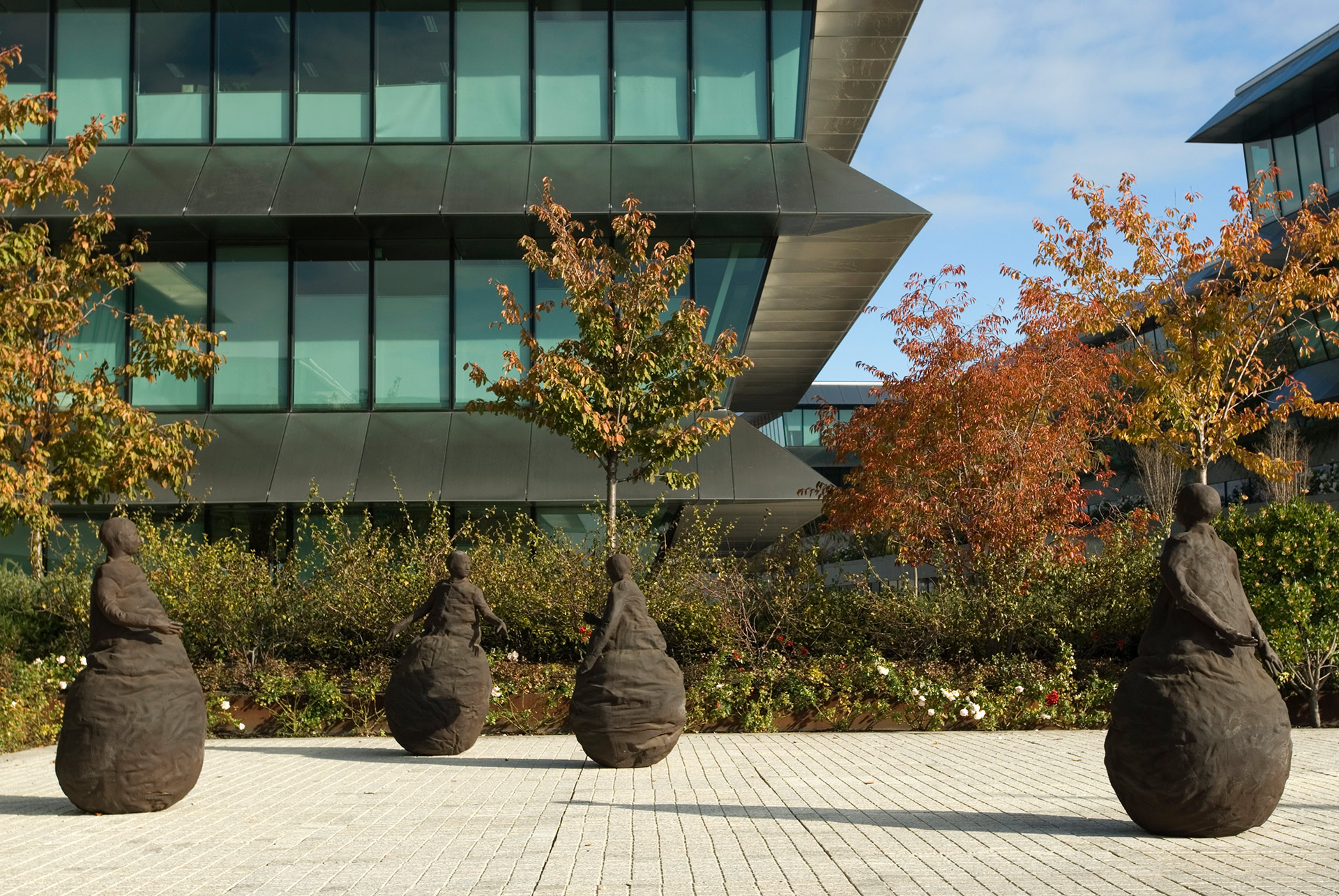
Juan Muñoz (Madrid, 1953 – Ibiza, 2001)
Conversation Piece I
2001
WORK INFORMATION
Bronze, 149 × 90 × 80 cm each 4 figures.
OTHER INFORMATION
Weight: 180 kg each
Juan Muñoz is one of Spain's most internationally acclaimed artists. In the late 1970s he moved to London to study at the Central School of Art and Design and the Croydon School of Art and Technology. In 1982, he attended the Pratt Graphic Center in New York thanks to a Fulbright scholarship. On returning to Madrid, he curated the exhibition Correspondencias, and in 1984 his first solo show opened at Galería Vijande. Although his work received more accolades abroad than in his own country, Muñoz settled on the outskirts of Madrid, where he lived and worked until his untimely death at the pinnacle of his career, when his great exhibition Double Bind was about to open at Tate Modern in London. In 2000 he was awarded the National Visual Arts Prize.
Defying all stylistic classification, Muñoz's oeuvre revolved around sculpture, drawing and, later on, various radio projects. After a time spent working on small sculptures shaped like stairs, balconies or handrails, he embraced the figurative form. His characters were often inserted in clearly defined spaces such as illusionistic floors, mirrors, columns or stages where these solitary, mute figures conversed with a static environment which for Muñoz was largely a derivative of De Chirico's metaphysical places. His characters were dwarfs, ventriloquist's dummies and ballerinas. Starting in 1989, these female figures rested on a hemispherical base that paradoxically allowed them to rock back and forth but prevented them from moving. The ballerinas were followed by male figures with the same kind of base, legless men resembling roly-poly dolls.
In Conversation Piece I we see several figures with spherical bases clad in voluminous garments, creatures that swivel their trunks and move their arms yet remain anchored to the ground. They are not quite life-sized, and their features are vague and generic. Made in 2001, the year of Muñoz's death, this is one of his last Conversation Pieces, a type of work he began creating in 1991. The figures are undoubtedly engaged in a conversation, obviously interacting with each other. From their respective positions, each figure establishes the perimeter of the activate space, like a chess game put on hold indefinitely, where the ground they occupy is just as important as the sculptures themselves, if not more so. Spectators can approach them, wander among them and sense their paradoxical significance. While their anthropomorphic appearance invites a degree of proximity, it is clear that they are blind to the world around them, attuned only to the silent conversation with their fellows. Prior to this work, Muñoz had created other figures associated with the surrounding space of the floor; they are images of difference, beings forced to lead a "different" life, a life of self-absorption, narcissism or anticipation of what might happen but never does, of what might be heard but never is. Above all, these "conversations" offer situations in which viewers can experience their own lives in different ways. Engrossed in their inaudible debate, they construct their own reality in their inner communication and simultaneous isolation from the outside world. [Carmen Bernárdez]

